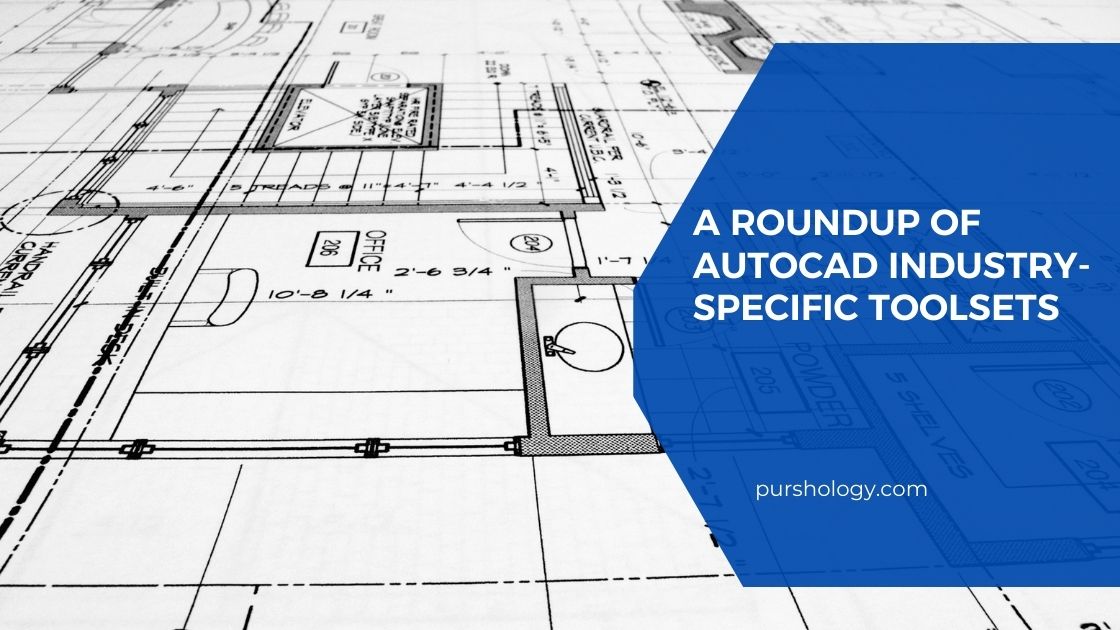AutoCAD is a computer-aided design software from Autodesk used by architects, drafting technicians, engineers, and other construction professionals. You can use it to create precise 2D and 3D drawings or blueprints of buildings, bridges, roads, and all sorts of structures.
AutoCAD is a robust design tool, but its rich features make it a bit complicated and daunting to learn on your own. But undoubtedly, learning AutoCAD will significantly improve your workflow, so a good AutoCAD course is a worthy investment.
One of the most functional features of AutoCAD is its predefined industry toolsets. AutoCAD’s industry-specific toolsets have the potential of simplifying your workflow and improving your overall AutoCAD experience by customising your workspace with pre-selected tools relevant to your industry.
AutoCAD Toolsets
The following are five of the AutoCAD toolsets available in the most recent iteration of the software.
1. Architecture Toolset
The architecture design and drafting toolset includes more than 8,500 intelligent, ready-to-use objects and styles that will speed up the design process for architects.
Using the architecture toolset, you can work in renovation mode. This will let you work on a single drawing but allow you to switch between renovation plan types. Since you can work on a single drawing, you will have no trouble keeping track of your changes, and you can avoid errors caused by editing multiple drawings.
The architecture toolset will let you save hours in drawing and drafting. You can automatically create room outlines and ceiling grids and generate elevations and building sections without going through the onerous task of projecting lines from the floor plan.
The architecture toolset also has thousands of building objects that you can “plug in” to your drawings, so you don’t have to draw them manually. To add a single overhead door, panelled, for exterior use, you simply have to select Overhead – Single – Paneled – Exterior from the available door options. If you need to add a rectangular picture window, you just need to select Picture.
Indeed, all you need to do is choose the style of walls, doors, and windows that you need from the options. Most of the styles you’re ever likely going to need in your design are readily pluggable. But if you must, you may create new styles as you see fit.
2. Mechanical Toolset
The mechanical toolset has been designed specifically for the way mechanical engineers use AutoCAD. The following are some of the most productivity-enhancing features of the mechanical toolset:
- A library of more than 700,000 standard parts, improving the accuracy of your design through the use of industry-standard parts
- Automatic parts creation drawing automation
- Building drawings automatically from engineering data
- Intelligent layer management system, which automatically organises items, placing them on the correct layer as you draw them
- Additional calculation functions that speed up the analysis of 2D geometries subject to static loads
- Intelligent hidden line creation, creating hidden lines automatically when overlapping objects are specified
- Identical parts identification even when they are hidden
- Numerous options to create rectangles, arcs, and circles
3. Map 3D Toolset
The map 3D toolset is intended for geographic information systems and 3D mapping professionals.
This toolset has three readily usable mapping workspaces: the planning and analysis workspace, the maintenance workspace, and the 2D drafting workspace.
It allows for the smooth integration between geographic information systems and CAD. Connect to a feature source (a database, web server, file-based source, or table), then select the feature types to include in your map. By linking data directly to your drawing, your block attributes can display current and accurate information.
The 3D map toolset also has coordinate geometry input commands. Use them to create geometric parcels from survey data. It lets you build topologies, which you can use to perform analytical calculations to extract new information.
This toolset also provides easy to apply styles and themes for custom and functional map creation. To aid in precision, you can run drawing clean-up actions that will correct undershoots and overshoots, simplify objects, delete duplicates, and resolve other drawing errors and inconsistencies.
4. Electrical Toolset
This toolset improves the electrical design workflow and is designed for electrical engineers and adjunct professionals. According to Autodesk, using the electrical toolset led to a near doubling of productivity among AutoCAD users in electrical design.
This toolset includes specific tools that allow for easy electrical documentation, electrical schematic design, and electrical controls design.
One helpful feature of the electrical toolset is the extensive electrical schematic symbol library. This simplifies the design process; you just need to choose from the rich library of more than 2,000 standard schematic symbols.
To speed up the schematic design process, you can use the Circuit Builder to build simple electrical designs and reuse old schematics with the circuit panel open. It also has commands specifically applicable to electrical design.
With the audit panel open, on the other hand, the system will automatically audit your design so you can catch errors in real-time. This will let you detect errors before you proceed to the build phase. The toolset also automatically numbers wires and ID tags components, reducing numbering and tagging errors.
The toolset lets you clearly specify parent-child relationships among electrical components. It automatically generates reports, publishes schematics to PDFs, and allows for the easy sharing of drawings between the designer and stakeholders. The toolset also provides a preview with component insertion and seamlessly integrates with Autodesk’s Inventor software.
5. MEP Toolset
MEP stands for mechanical, electrical, and plumbing and the MEP toolset is designed to aid in MEP draft, design, and documentation.
Its features include predefined workspaces designed for efficient MEP workflows, an extensive library of components relevant to MEP drafting and design, and a readymade collection of HVAC MvParts.
You can easily create complete wiring circuits from electrical design configurations and piping plans from ready templates using this toolset. It also allows the juxtaposition of 2D and 3D representations of the same system, batch conversion of blocks, and addition of custom components.
Feature-Rich But Simple, Extensive Yet Manageable
AutoCAD is a leading drafting and design software for a lot of reasons. It has so many useful features that architects, mechanical engineers, electrical engineers, civil engineers, drafting technicians, and all sorts of construction professionals can benefit from this incredibly feature-rich software.
Regardless of its extensive list of features, however, AutoCAD avoids becoming unwieldy by providing industry-specific toolsets. By including industry-specific toolsets, AutoCAD enhances workflows by providing readily pluggable components, parts, styles, and objects filtered for relevance and use-case application.
Of course, AutoCAD is still better taught than learned on your own.
Good thing there are plenty of IT training institutes in Abu Dhabi, London, New York, and other places worldwide where AutoCAD training is available, so finding an AutoCAD course should be no problem at all.
AUTHOR BIO
Jerrin Samuel is the Executive Director at Regional Educational Institute (REI) in Abu Dhabi. Since 1995, REI has been at the forefront of education by delivering quality corporate training courses in the UAE, helping many businesses and organizations achieve greater productivity and higher customer satisfaction levels.




